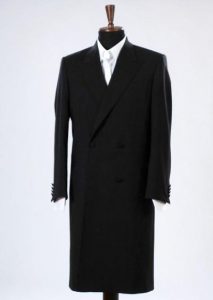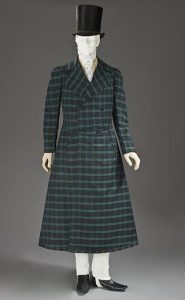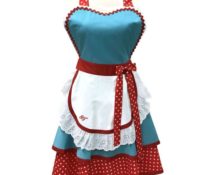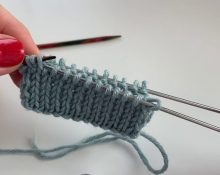
creativecommons.org
Today we’ll talk about such an unusual piece of outerwear as a lapserdak. In this article you will learn the history of this national costume. At the end of the material you will find instructions on how to sew a lapserdak with your own hands.
What is lapserdak and what are its varieties?
Lapserdak is a traditional long frock coat worn primarily by Jewish believers. It is important that the lapserdak should cover the main part of the torso and arms. This type of clothing is popular primarily among Orthodox Jews, for whom compliance with all formalities is important. Initially, the length of the lapserdak varied: the lower side of the coat could end at knee level, or at ankle level. Today, Orthodox Jews wear a knee-length lapserdak. Usually it is not worn every day, but is worn for services and special occasions.
Lapserdak history
The first mention of this elongated frock coat appeared in Western Europe in the 10th century and was called Levites.There are several theories by linguists why today this type of clothing is called lapserdak. According to one version, this funny name comes from the German word “Lappen”, which translates as “rag”, and the Ukrainian word “serdak” - the name of peasant outerwear. According to another (more logical) version, the word became a tracing paper from the Yiddish name - “Labserdak”. The first unusual version is explained by the fact that in the 15th century there was a massive resettlement of Jews to the territory of modern Poland and Ukraine, so words from the German and Ukrainian languages could well have been combined and formed such an unusual neologism.
The cut of the lapserdak underwent significant changes, but after the 17th century it acquired a unified form in Western Europe and the Russian Empire, which includes the territories of modern Ukraine, Poland and Lithuania. At that time, lapserdak was worn not only by representatives of certain religious denominations, but also by ordinary townspeople. In his notes to the story “The Lord’s Court,” Nikolai Leskov explains the word “lapsardak” as follows (in the work it is mentioned in the modified form “lapsardak”): “a short jacket with a set number of ties and fringes.” In the twentieth century, lapserdak began to be worn only by Jewish believers, and due to the aggravation of anti-Semitic sentiments in the Russian language, this name for outerwear began to be used in the meaning of “rags, cast-offs” and became associated with poorly tailored, ridiculous clothing. Unfortunately, this attitude had a completely logical explanation: at the beginning of the twentieth century, practical lapserdak, made with one’s own hands, began to be worn mainly by the poor or those in need; lapserdak had many patches and holes, but due to its reliable cut and dense fabric, it could serve for decades.Oppressed Jews were forced to take care of their jackets and pass on shabby coats as inheritance from father to son.
What you will need to sew lapserdak with your own hands:

creativecommons.org
- A piece of thick fabric. The choice of fabric depends on many factors, primarily on the purpose of sewing. For a gift to an Orthodox Jew, you should choose black or gray fabric without a pattern, but for a ceremonial lapserdak, you can go beyond the canon.
- Pattern adjusted to the size of the model.
- Sewing supplies (needle, thread, scissors and other necessary parts).
Today lapser coat has gone out of fashion and almost no one wears it. But the pattern of this unusual type of clothing may be needed for a gift, a themed event or a performance.
- Customize the selected pattern by building it according to the parameters of the model.
- Attach the already adjusted pattern to the fabric. Please note that the lobe thread should run along the length of the lapserdak. If, according to your idea, the lapserdak should have a pattern, adjust the position of the pattern.
- Leave 2.5 cm for allowances.
- Cut out the resulting parts, leaving indentations for processing the edges of the clothing.
- Sew the sides and back. If necessary, you can try the silhouette on a model to make sure the length is correct.
- Sew the sleeve parts
- Sew the sleeves to the main part of the lapserdak.
- Create a collar.
- Finish the edges of the lapserdak and sew on the buttons.


 0
0





